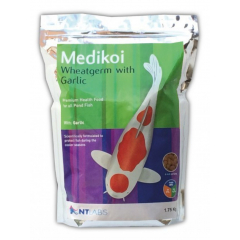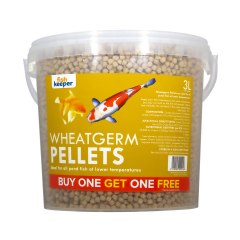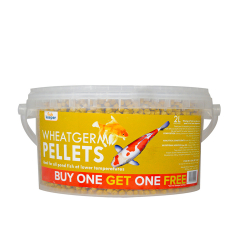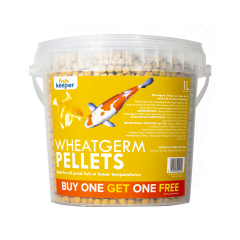What is wheatgerm and why do we recommend feeding pond fish wheatgerm in autumn?
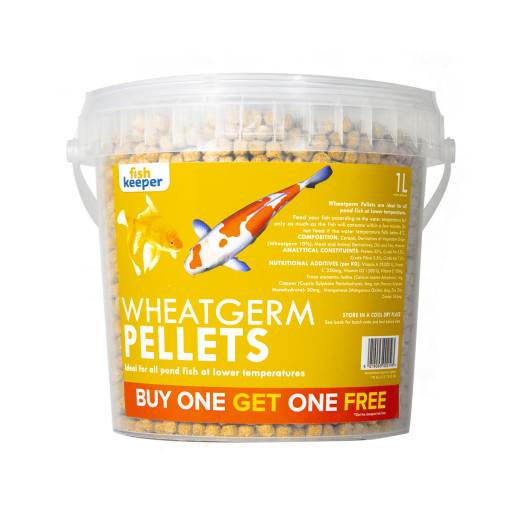
Wheatgerm is the nutrient-rich core (or “germ”) of the wheat grain. It’s a small part of the wheat kernel, but it's packed with vitamins, minerals, and healthy oils—making it a highly digestible, nutrient-dense food ingredient.
As the weather cools and water temperatures drop, your fish’s metabolism begins to slow. This seasonal shift makes wheatgerm-based food the ideal choice for autumn feeding—and here’s why:
Easily digestible
Wheatgerm contains complex carbs and low-fat proteins that are easy for fish to process, even in cooler water when digestion slows down.
Supports immune health
It’s packed with essential nutrients, vitamin E, and fatty acids, helping boost your fish’s immune system ahead of the winter months.
Reduces waste and keeps water clear
Because it’s more easily digestible, fish produce less waste, which helps keep your pond cleaner at a time when biological filtration begins to slow.
Gentle on the gut
Low temperatures make digestion harder, causing bloating and associated illness in koi, goldfish, and other coldwater species.
Prepares fish for winter
Feeding wheatgerm in autumn helps minimise the presence of undigested food in the gut —perfect preparation for winter dormancy.
When selecting wheatgerm food, consider these essential factors:
1. Pellet Type: Floating vs. Sinking
- Floating pellets
Easier to monitor consumption and remove uneaten food; ideal for keeping water clean. - Sinking pellets
It may be preferred in deeper ponds where fish feed lower down; just ensure uneaten bits are removed to avoid decay.
2. Protein content
- Lower protein is best: it matches the needs of fish in cooler temperatures and minimises waste products.
3. Added Nutrients
Look for feeds enriched with vitamins and immune boosters:
- Vitamin E, linolenic acid, vitamin C, D, spirulina, astaxanthin, canthaxanthin—these support immune health, colour, and overall vitality.
4. Pellet Size
- Choose a pellet size (small, medium, large) that matches your fish size to ensure efficient consumption.
5. Recommended Temperature Range
- Prefer feeds with clear guidance. For example, use above 5 °C and stop feeding below that.
